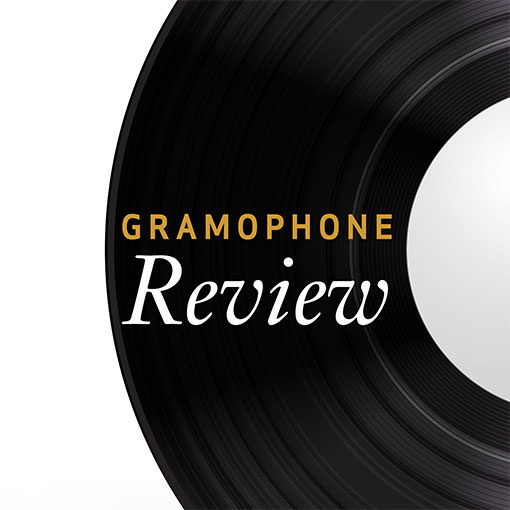Bach Solo Cello Suites
View record and artist detailsRecord and Artist Details
Composer or Director: Johann Sebastian Bach
Label: DG
Magazine Review Date: 11/1985
Media Format: Cassette
Media Runtime: 0
Mastering:
DDD
Catalogue Number: 415 416-4GX2

Tracks:
| Composition | Artist Credit |
|---|---|
| (6) Suites (Sonatas) for Cello |
Johann Sebastian Bach, Composer
Johann Sebastian Bach, Composer Mischa Maisky, Cello |
Composer or Director: Johann Sebastian Bach
Label: EMI
Magazine Review Date: 11/1985
Media Format: Cassette
Media Runtime: 0
Mastering:
DDD
Catalogue Number: EX270077-5

Tracks:
| Composition | Artist Credit |
|---|---|
| (6) Suites (Sonatas) for Cello |
Johann Sebastian Bach, Composer
Heinrich Schiff, Cello Johann Sebastian Bach, Composer |
Composer or Director: Johann Sebastian Bach
Label: EMI
Magazine Review Date: 11/1985
Media Format: Vinyl
Media Runtime: 0
Mastering:
DDD
Catalogue Number: EX270077-3

Tracks:
| Composition | Artist Credit |
|---|---|
| (6) Suites (Sonatas) for Cello |
Johann Sebastian Bach, Composer
Heinrich Schiff, Cello Johann Sebastian Bach, Composer |
Composer or Director: Johann Sebastian Bach
Label: DG
Magazine Review Date: 11/1985
Media Format: Vinyl
Media Runtime: 0
Mastering:
DDD
Catalogue Number: 415 416-1GX3

Tracks:
| Composition | Artist Credit |
|---|---|
| (6) Suites (Sonatas) for Cello |
Johann Sebastian Bach, Composer
Johann Sebastian Bach, Composer Mischa Maisky, Cello |
Composer or Director: Johann Sebastian Bach
Label: DG
Magazine Review Date: 11/1985
Media Format: CD or Download
Media Runtime: 0
Mastering:
DDD
Catalogue Number: 415 416-2GX3

Tracks:
| Composition | Artist Credit |
|---|---|
| (6) Suites (Sonatas) for Cello |
Johann Sebastian Bach, Composer
Johann Sebastian Bach, Composer Mischa Maisky, Cello |
Author: Stephen Plaistow
Maisky's style of playing needs the space. It is grand, sonorous, imposing—communicating in a more public tone of voice than most cellists favour in unaccompanied Bach these days. (LS found Harrell ''so quietly confidential that he seems only to be allowing us to eavesdrop on his private musings''.) Even the most intimate movements—the Sarabande of Suite No. 5, for instance—are projected with a theatrical hush that one senses is meant to reach the back of the stalls. It is terrific cello playing but it sometimes strikes me as a bit much. The manner is insistent, the line as legato and full as can be fashioned. The Allemande of Suite No. 6, with repeats, lasts 12'7'' on CD; on LP one repeat has had to be cut in order to get the work on to one side. The sound is lovely, but at the beginning of this movement I wondered if Maisky was ever going to come off the first long note—and the trouble with such slow tempos is that the larger harmonic shapes become barely perceptible. The Prelude of Suite No. 4 is an instance where the music seems almost rooted to the spot, obsessed by a one-bar pattern, winching its way forward only with difficulty. This E flat Suite takes 19' in Maisky's performance, 21' in Schiff's.
A difference of no less than eight minutes might call for remark in a performance of Bruckner's Eighth Symphony; in a Bach suite one can only say that either Bach gave his interpreters an extraordinary freedom or one of his interpreters here has got something wrong. Well, I can enjoy Maisky's high eloquence but it is rather unremitting, and I do find a more varied world and what I sense to be a more balanced and idiomatic projection of the music from Schiff. The contrast with Maisky could hardly be stronger. There is eloquence but also grace, briskness and lightness of spirit; grandeur—in the big preludes—but without inflation; variety of pace; variety of expression (which I find Maisky particularly short on); and above all much more variety of articulation than we're accustomed to hear. It's as if Schiff has taken an intelligent interest in the revival of old playing styles, as pioneered in his own country by Harnoncourt and Anner Bijlsma in Holland, and brought to his interpretations, on the modern cello, a perception of the different range of expressiveness that was once proper to the suites. It is a range which today's players, unless they have Schiff's intellectual curiosity, are inclined to ignore. But Schiff has done more than attempt to graft a few 'authentic' features on to a traditional reading. In his attempt to free the music from the tyranny of the bar-line his set may not always be successful, I think, but it is always vivid and fresh. He communicates, to me, more enjoyment in the playing than the other cellists here, and I would describe his achievement as the most stimulating version of the suites to have emerged since Tortelier's in 1983 (HMV SLS107772-3, 11/83).'
Discover the world's largest classical music catalogue with Presto Music.

Gramophone Digital Club
- Digital Edition
- Digital Archive
- Reviews Database
- Full website access
From £8.75 / month
Subscribe
Gramophone Full Club
- Print Edition
- Digital Edition
- Digital Archive
- Reviews Database
- Full website access
From £11.00 / month
Subscribe
If you are a library, university or other organisation that would be interested in an institutional subscription to Gramophone please click here for further information.





